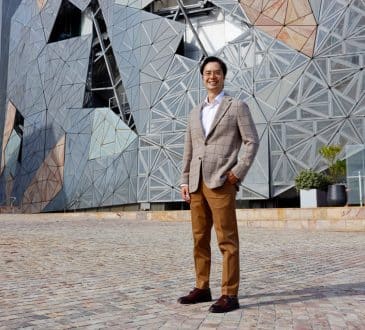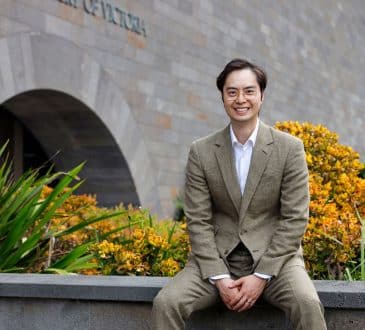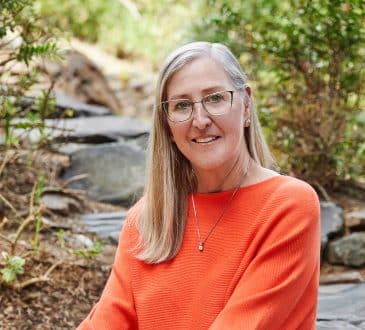Six simple steps to fight climate change

On a global scale, the last two years has been a time of great contrasts and upheaval. While the world saw agreement on 17 inspiring UN SDGs and real enthusiasm around a global climate agenda in Paris, we have also seen dark forces emerge on all continents – working hard to reverse these monumental gains.
We have all seen and experienced these forces – ranging from a rampage of extremism and terrorist attacks on innocent people, to new “democratic” governments wielding their axe on international collaboration and current efforts to secure a sustainable planet for future generations.
Self-interest, segregation and alternative facts have been accepted mantras.
All this happens while my family and I continue to live our lives in “a peaceful, orderly and affluent bubble” in Norway. Of course, issues and challenges also exist in our community, and the impact for affected citizens is real. But when seen against the gloomy and scary global backdrop, these local issues can easily feel trivial, all while the global developments can feel totally disconnected with how we live our lives. Not good. Not easy.
I strongly believe it is important to connect the two worlds. And to do it fast.
Provoked by “the dark forces” we decided to take a step forward, and “organized” our household climate agenda into six areas – in which we will try to make better and more sustainable choices.
#1 PLASTIC (not) FANTASTIC
Until last year, I must admit, our household awareness of the “plastic issue” was fairly limited, and we pretty much used plastic as everyone else did.
In our municipality in Norway we have a very efficient system for plastic collection. Gradually we became aware that the growing heaps of plastic we collected and returned every week.
We “suddenly” also became aware that plastic is “all around us”, and used for a million trivial everyday tasks. But we also soon realized that there are so many cool alternatives available, and we found it fun and challenging to try them out.
Ever try the Swedish bamboo toothbrush – Humble Brush? Not only functional and sustainable, but based on the same “one for one” philosophy as Toms shoes.
Or what about replacing Tupperware with glass or ceramics? Or replacing “Glad-pack” with reusable “showercaps” for keeping food leftovers fresh?
Our ambition is to find more alternatives, while reclaiming and recycling 100%.
#2 STOP SHOP Light, green and organic
Stop shop light means not buying any “things” except daily necessities, but still enjoying cinemas, eating out, “experiences”, along with some travelling. I have never really enjoyed shopping, so my year off from shopping was actually quite easy, and not surprisingly very healthy for the household finances!
Do we need to throw out everything we own – following recent fads? Or stop buying anything at all – altogether. Well, that’s not the plan.
For this year, our concept is adapted and a bit more pragmatic.
Our new mantra is “purchase new to replace”. The focus is to buy what we really need, replace when things are not fixable, reuse and refit, collect & recycle all used fabrics, purchase quality, donate and sell things not needed anymore and start roaming second-hand stores.
When buying food, choose green before red. Everyone knows that the production of meat is a large contributor to global greenhouse gas emissions. When we also know that an increased share of meat in our daily diet contributes directly to many of the fast-growing lifestyle diseases – cutting down on the family’s meat consumption is no-brainer.
We haven’t stopped eating meat altogether – but have replaced a significant share with more vegetables and fish. When we do eat meat – we often purchase meat from organic farms, and sometimes wild game when available.
#3 GREEN POWER ALL AROUND
Most people are used to buying power from their local power company, but many are not yet requesting that their power should come from renewable sources. The origin of power really does matter!
This year we have changed power suppliers (again) – aggregating all our power needs for our family house, our small mountain cabin, and my mother’s summer house. We have chosen to bring “our business” to a local start-up solar provider.
We also decided to start producing our own solar power last spring in combination with our thermal heating system. Following the lead of a fast-growing solar movement, Norwegians have decided that even beyond 60 degrees North (same as Anchorage, Alaska), solar sounds like a great idea.
Solar is not only cheap and easy, it also has the ability to engage normal people in clean energy issues – and with this contribute to changing our energy behaviour.
#4 SLASH FOOD WASTE
Food loss and waste amount to a major squandering of resources, and needlessly produce greenhouse gas emissions, contributing to global warming and climate change.
Knowing that roughly one third of the food produced in the world for human consumption every year — approximately 1.3 billion tons — gets lost or wasted, is just plain frustrating.
On a household level – wasted food also means throwing money out the window. Literally. Sorting and bagging our food waste is a sobering exercise, and fast creates awareness of what we throw out, and how much.
We are now trying to rethink our shopping habits, as a first step. Buying less, rather than going for the unneeded “3 for the price of 2” bargains. We are taking a close look at our daily “dinner menus” making sure leftovers can have a natural role to play. Lots of food is perfectly edible, days and sometimes weeks, after the official stamped “best before date”.
Not throwing out food seems so obvious. But, actually kicking the habit, has been more challenging than we thought. Slowly though, we are learning. And that feels good!
#5 FLYING LESS AND SHORTER
Air-travel – along with international shipping – remain unregulated by international climate agreements. And this while air travel is responsible for 2 % of all global greenhouse emissions.
For our family’s common carbon budget – air travel is a disaster. It is by far the activity that creates the biggest and most negative effect.
Last year we limited air travel mostly to what has been work related, and to shorter trips domestically. No continental flights. No exotic destinations in remote corners of the world. Although this probably have had a significant effect on our total emissions – it feels very unrealistic to have the world stop travel. The urge to travel is strong. The ability – cost- and time-wise – is growing. We can take small steps ourselves – but we need international agreements to regulate emissions from air travel, and incentive system encouraging real investment in sustainable solutions.
#6 GET ACTIVE
The biggest threat to our civilization is climate change.
The largest challenge in curbing climate change is not ignorance represented by politicians.
The most serious threat comes from the lack of engagement from “people in the street”. A large majority of people across our 5 continents are aware of, and understand that climate change is happening, and needs to be stopped.
Instead of hoping for dramatic political action, new paradigm-shifting technology or responsible business to pull the weight alone – our only real hope is that people realize they can make a difference.
WE HAVE NO TIME TO LOSE
- Act now. Start with the easy stuff.
- Purchase products that are better – not necessarily perfect.
- Protest and campaign.
- Support your local environmental organization.
- Debate and learn, but have fun doing it.
- Be inspired. Bring your aunt and your mother.
Bring the best of the CEOWORLD magazine's global journalism to audiences in the United States and around the world. - Add CEOWORLD magazine to your Google News feed.
Follow CEOWORLD magazine headlines on: Google News, LinkedIn, Twitter, and Facebook.
Copyright 2025 The CEOWORLD magazine. All rights reserved. This material (and any extract from it) must not be copied, redistributed or placed on any website, without CEOWORLD magazine' prior written consent. For media queries, please contact: info@ceoworld.biz











